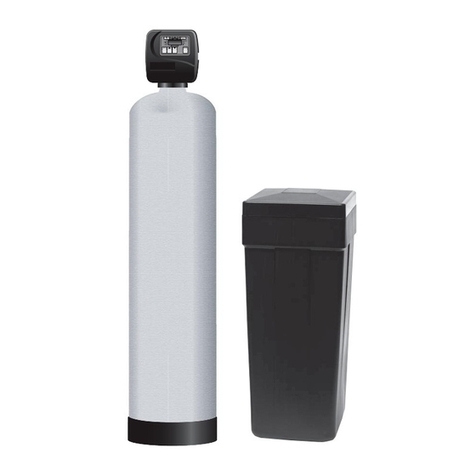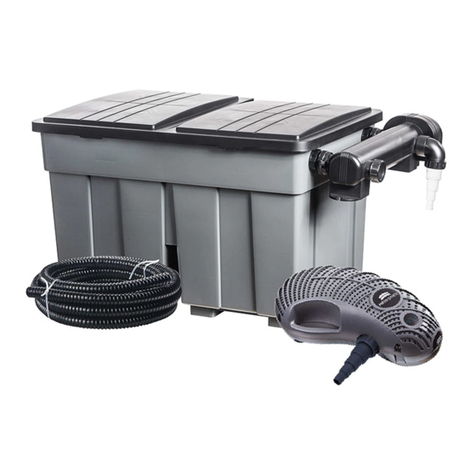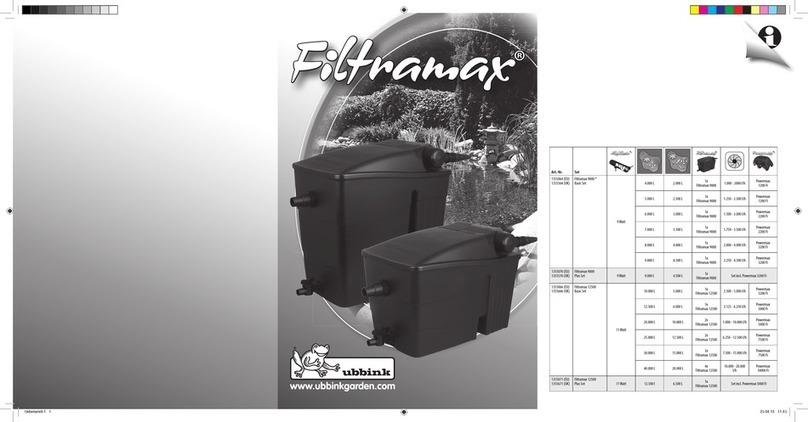
7
QUARTZ SLEEVE:
Note: Before start up, flush unit for 3 minutes with running water. After flush-
ing, follow sanitation procedures.
Installation of the Quartz Sleeve:
Always handle quartz sleeves carefully to prevent breaking or chipping. The quartz sleeves are to be
clean and free of fingerprints before installing.
Remove the compression nuts. Install the quartz sleeve through the stainless steel threaded nipples
allowing an equal amount to extend beyond each nipple. Install the O-Ring down to the top of the
nipple. Avoid riding the O-Ring on any threaded part of the nipple. Hand-tighten each compression
nut to form a compression seal around the quartz sleeve. Avoid overtightening the nuts, which may
cause a fracture on the end of the quartz sleeve. Under normal operation conditions, hand-tightening
will provide a 100 psi seal. Do not use any devices to tighten end nuts.
After you have tightened the compression nuts and all other plumbing connections, open the outlet
valve. Slowly open the inlet valve and flush out all remaining air. Then close the outlet valve and
slowly open the inlet valve fully. Check the unit for leaks. If you find a leak at the compression nut,
tighten the nut further. If the leak continues, drain the unit and inspect the quartz O-Ring and quartz
sleeve for proper seal. Once you complete checking the unit, reassemble O-Ring and tighten gland nut.
Repressurize the unit and check again.
REQUIREMENTS FOR CLEANING THE QUARTZ SLEEVE:
As water passes through the U.V., minerals, debris and other matter in the water may deposit onto the
quartz sleeve. After sufficient film has formed on the quartz sleeve, the ability of the ultraviolet
germicidal rays to pass though the quartz sleeve and into the water may be impaired. Therefore, it is
necessary to determine a cleaning schedule for the quartz sleeve. The frequency will depend on the
specific type of water conditions. If the water has been processed through softeners and/or filters; clean-
ing may be required only once per year. If untreated water is used, the cleaning frequency will vary. A
minimum of once yearly is the standard recommendation for cleaning and lamp replacement. Contact
your local dealer for scheduling this service. Your specific situation will vary the frequency time
according to the water quality of the home or facility application.
QUARTZ SLEEVE CLEANING PROCEDURES:
To clean the quartz sleeve, turn off the water flow to the disinfection unit, and disconnect the electrical
service. Carefully remove the U.V. lamp. Loosen the compression nuts with O-Rings and remove the
quartz sleeve while draining the water from the chamber. The quartz sleeve may then be washed with
a mild soap and hot water solution and rinsed clean with hot water. Should this be insufficient to clean




























